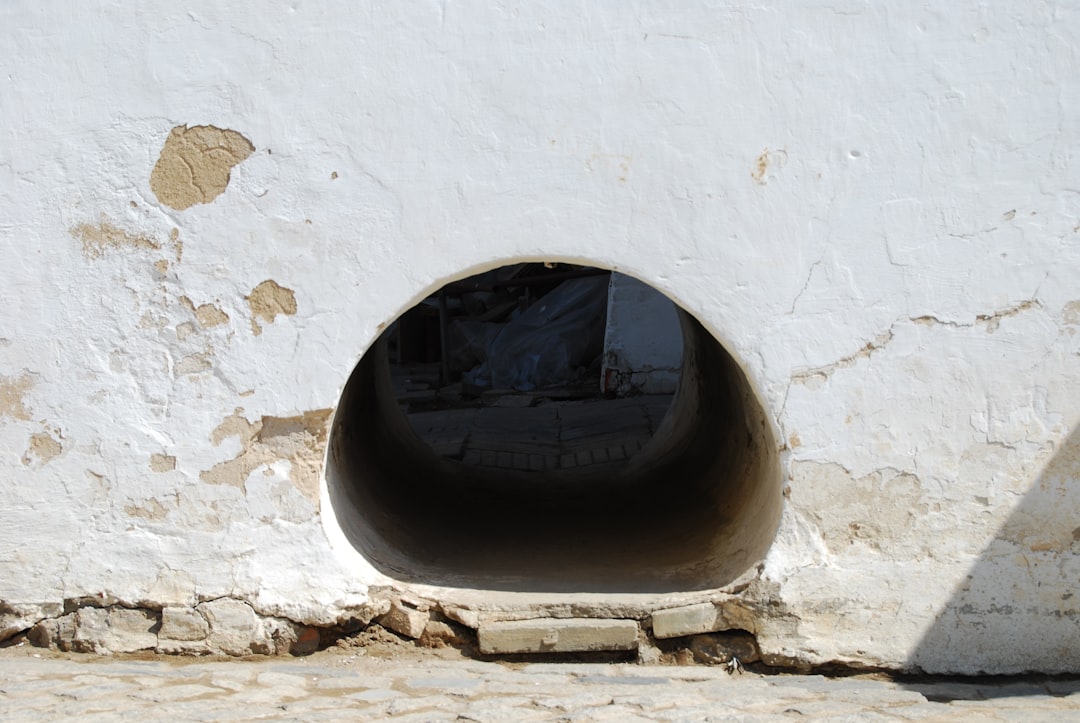Navigating the Northwest Passage and the Drake Passage represents a journey through some of the most remote and challenging waters on Earth. The Northwest Passage, located in the Arctic Archipelago of Canada, has long been a coveted route for explorers and traders seeking a shortcut between the Atlantic and Pacific Oceans. Its icy waters, however, are fraught with peril, presenting a formidable challenge to even the most seasoned mariners.
In contrast, the Drake Passage, situated between the southern tip of South America and Antarctica, is notorious for its turbulent seas and unpredictable weather. Both passages offer unique experiences that attract adventurers, researchers, and tourists alike, each with their own set of challenges and rewards. The allure of these passages lies not only in their geographical significance but also in their rich histories and the diverse ecosystems they encompass.
As global warming continues to alter the Arctic landscape, the Northwest Passage is becoming increasingly navigable, drawing attention from shipping companies and environmentalists alike. Meanwhile, the Drake Passage remains a vital route for vessels traveling to Antarctica, serving as a gateway to one of the planet’s last great wildernesses. Understanding the intricacies of these passages is essential for anyone considering a journey through these remarkable yet demanding waters.
Key Takeaways
- Navigating the Northwest and Drake Passage offers unique and challenging experiences for adventurers and explorers.
- Weather and climate differences between the two passages can greatly impact travel and expedition plans.
- The wildlife and scenery in both passages are diverse and breathtaking, providing opportunities for unforgettable encounters and stunning views.
- The historical significance of these passages is rich and storied, with connections to famous explorers and significant events.
- Safety and navigation challenges must be carefully considered and prepared for when embarking on a journey through these passages.
Weather and Climate Differences
The weather and climate in the Northwest Passage and the Drake Passage are as varied as the landscapes they traverse. The Northwest Passage experiences a polar climate characterized by long, harsh winters and short, cool summers. Ice cover can persist for much of the year, making navigation difficult and often impossible until late summer when temperatures rise slightly, allowing for some melting.
However, climate change has led to a reduction in sea ice extent, creating new opportunities for navigation but also raising concerns about environmental impacts and indigenous communities that rely on traditional hunting practices. In contrast, the Drake Passage is infamous for its volatile weather patterns. The convergence of cold polar waters from the south and warmer currents from the north creates a tumultuous environment that can change rapidly.
Sailors often describe the Drake as having “the worst weather in the world,” with fierce winds and towering waves that can challenge even the most robust vessels. The passage is particularly treacherous during the winter months when storms are more frequent. Understanding these climatic differences is crucial for anyone planning to navigate these waters, as they can significantly impact safety and overall experience.
Wildlife and Scenery

Both the Northwest Passage and the Drake Passage boast stunning natural beauty and rich biodiversity that captivate those who venture into their realms. The Northwest Passage is home to a variety of wildlife, including polar bears, seals, and numerous seabird species. The stark contrast of icebergs against deep blue waters creates breathtaking vistas that are both haunting and beautiful.
Glacial landscapes dominate the scenery, with towering cliffs and expansive ice fields that tell stories of millennia past. The region’s remoteness adds to its allure, offering glimpses of nature in its most pristine form. On the other hand, the Drake Passage offers a different kind of spectacle.
The waters are teeming with marine life, including whales such as humpbacks and orcas, which can often be spotted breaching in the distance. The surrounding landscapes are equally dramatic, with rugged coastlines and snow-capped mountains that rise sharply from the sea. The passage serves as a critical habitat for various seabirds, including albatrosses and petrels, which glide gracefully above the waves.
For those who appreciate wildlife watching and stunning scenery, both passages provide unforgettable experiences that highlight the beauty of nature.
Historical Significance
| Event | Year | Significance |
|---|---|---|
| French Revolution | 1789 | Marked the end of absolute monarchy in France and the rise of democracy |
| Declaration of Independence | 1776 | Established the United States as an independent nation |
| Industrial Revolution | 1760-1840 | Transformed the world with new inventions and the rise of factories |
The historical significance of both the Northwest Passage and the Drake Passage cannot be overstated. The Northwest Passage has been a focal point of exploration since the 15th century when European explorers sought a faster route to Asia. Figures such as Martin Waldseemüller and John Franklin became synonymous with attempts to navigate these icy waters, often facing dire consequences in their quests.
The passage symbolizes human ambition and resilience in the face of nature’s challenges, representing both triumphs and tragedies throughout history. Conversely, the Drake Passage holds its own historical importance as a critical maritime route for explorers venturing to Antarctica. It was named after Sir Francis Drake, who navigated these treacherous waters in the late 16th century during his circumnavigation of the globe.
The passage has since become a vital corridor for scientific research expeditions to Antarctica, facilitating access to one of Earth’s most remote regions. Both passages serve as reminders of humanity’s enduring quest for knowledge and exploration, highlighting how these waterways have shaped maritime history.
Safety and Navigation Challenges
Navigating through either the Northwest Passage or the Drake Passage presents unique safety challenges that require careful planning and preparation. In the Northwest Passage, ice conditions can vary dramatically from year to year, necessitating up-to-date information on ice coverage and potential hazards. Vessels must be equipped with ice-strengthened hulls and have experienced crews familiar with navigating through icy waters.
Additionally, sudden weather changes can create dangerous conditions that require quick decision-making to ensure safety. The Drake Passage poses its own set of navigation challenges due to its notorious weather patterns. Sailors must be prepared for rough seas and strong winds that can arise unexpectedly.
Proper vessel preparation is essential, including ensuring that all safety equipment is in working order and that crew members are trained in emergency procedures. Understanding tidal currents and local navigation charts is also crucial for safe passage through these turbulent waters. Both passages demand respect for nature’s power and an understanding of maritime safety protocols to ensure a successful journey.
Accessibility and Transportation Options

Accessibility to both the Northwest Passage and the Drake Passage has evolved over time, influenced by advancements in technology and changing environmental conditions. The Northwest Passage has historically been difficult to access due to its icy waters; however, recent trends indicate that melting ice is opening up new routes for commercial shipping and tourism. While traditional icebreakers remain essential for navigating these waters during certain times of the year, smaller vessels are increasingly able to traverse parts of the passage during summer months when conditions permit.
In contrast, access to the Drake Passage is primarily facilitated by cruise ships and research vessels that operate year-round between South America and Antarctica. Ushuaia, Argentina, serves as a major departure point for expeditions heading into these waters. Travelers can choose from various tour operators offering trips ranging from short excursions to extended voyages that include landings on Antarctic shores.
As interest in polar exploration grows, transportation options continue to expand, making these remote regions more accessible than ever before.
Cultural and Indigenous Influences
The cultural significance of both passages is deeply intertwined with indigenous communities that have inhabited these regions for centuries. In the Northwest Passage, Inuit communities have thrived in this harsh environment, relying on traditional hunting practices for sustenance while maintaining a rich cultural heritage that includes storytelling, art, and music. Their knowledge of the land and sea is invaluable for understanding navigation through these challenging waters.
The cultural narratives surrounding exploration and connection to nature resonate strongly in both regions, emphasizing respect for traditional knowledge as modern exploration continues to unfold.
Adventure and Expedition Opportunities
For adventure seekers, both the Northwest Passage and the Drake Passage offer unparalleled expedition opportunities that cater to a range of interests. In the Northwest Passage, travelers can embark on guided tours that include kayaking among icebergs or hiking on remote islands rich in wildlife. These expeditions often focus on environmental education, allowing participants to learn about climate change’s impact on this fragile ecosystem while experiencing its beauty firsthand.
The Drake Passage also presents thrilling adventure options for those seeking an adrenaline rush. Many expedition cruises offer activities such as zodiac excursions to explore coastal areas or opportunities for whale watching in open waters. For those interested in scientific research or conservation efforts, there are programs available that allow participants to engage directly with researchers studying marine ecosystems or climate change impacts in Antarctica.
Research and Scientific Exploration
Both passages serve as critical areas for scientific research due to their unique ecosystems and changing environmental conditions. The Northwest Passage has become a focal point for studies related to climate change as scientists monitor melting ice caps and shifting wildlife patterns. Research initiatives often involve collaboration between indigenous communities and scientists to ensure traditional knowledge informs modern studies.
In contrast, the Drake Passage plays a vital role in understanding oceanic currents and their effects on global climate systems. Researchers utilize this route to study marine biodiversity while investigating how changes in temperature affect species distribution in Antarctic waters. Both passages provide invaluable opportunities for scientific exploration that contribute significantly to our understanding of climate change’s impact on polar regions.
Tourism and Recreation
Tourism in both the Northwest Passage and the Drake Passage has seen significant growth over recent years as more travelers seek unique experiences in remote environments. In the Northwest Passage, adventure tourism has flourished with guided cruises offering opportunities for wildlife viewing, cultural immersion with indigenous communities, and exploration of stunning landscapes rarely seen by outsiders. The Drake Passage attracts tourists primarily through expedition cruises heading toward Antarctica; these journeys often include educational components about marine life conservation efforts while providing breathtaking views of glaciers and ice formations along the way.
As awareness grows regarding environmental issues facing these regions, responsible tourism practices are becoming increasingly important to ensure sustainable exploration without compromising fragile ecosystems.
Choosing the Right Passage for Your Journey
Choosing between navigating the Northwest Passage or traversing the Drake Passage ultimately depends on individual preferences and interests. For those drawn to Arctic landscapes rich in indigenous culture and wildlife diversity, the Northwest Passage offers an unparalleled experience steeped in history and adventure opportunities amidst stunning scenery. Conversely, travelers seeking an expedition focused on Antarctic exploration will find that crossing through the Drake Passage provides access to one of Earth’s last great wildernesses while engaging with scientific research initiatives.
As climate change continues to reshape these regions’ landscapes, understanding their significance becomes increasingly vital—not only for adventurers but also for future generations who will inherit this remarkable planet.
The Northwest Passage and the Drake Passage are two of the most significant maritime routes in the world, each with its own unique challenges and historical significance. The Northwest Passage, located in the Arctic, has long been sought after for its potential as a shorter route between the Atlantic and Pacific Oceans, though it is often hindered by ice. In contrast, the Drake Passage, situated between the southern tip of South America and Antarctica, is known for its treacherous waters and strong currents. For those interested in exploring more about these fascinating passages and their impact on global navigation, you can find additional insights in a related article on MyGeoQuest.
WATCH HERE: Drake Passage: Earth’s Deadliest Waters Revealed
FAQs
What is the Northwest Passage?
The Northwest Passage is a sea route through the Arctic Ocean, along the northern coast of North America. It connects the Atlantic and Pacific Oceans through the Canadian Arctic Archipelago.
What is the Drake Passage?
The Drake Passage is the body of water between the southern tip of South America and the northern tip of the Antarctic Peninsula. It connects the Atlantic and Pacific Oceans.
Which passage is more navigable?
The Drake Passage is generally considered to be more navigable than the Northwest Passage. The Northwest Passage is often blocked by ice, making it difficult to navigate, while the Drake Passage is known for its rough seas but is generally ice-free.
Which passage is more commonly used for shipping and trade?
The Northwest Passage is becoming more accessible due to climate change, and there is increasing interest in using it for shipping and trade. However, the Drake Passage is currently more commonly used for shipping and trade due to its relatively more navigable conditions.
Which passage is more significant historically?
The Northwest Passage holds more historical significance as it was a sought-after route for explorers and traders seeking a shorter route between Europe and Asia. The Drake Passage, on the other hand, was not a major focus of historical exploration and trade routes.
Which passage is more environmentally sensitive?
Both the Northwest Passage and the Drake Passage are environmentally sensitive areas. The Northwest Passage is particularly vulnerable to the impacts of climate change, as melting ice is opening up the route to increased shipping and potential environmental risks. The Drake Passage is important for its role in global ocean circulation and is home to diverse marine life, making it environmentally sensitive as well.
